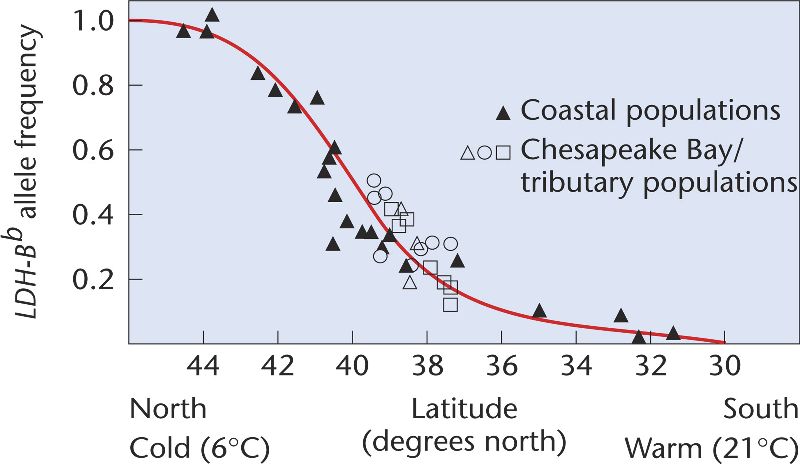
Another example of how the genetic structure of a species varies among populations is provided by the work of Dennis A. Powers and Patricia Schulte on the mummichog (Fundulus heteroclitus), a small fish (5 to 10 cm long) that lives in inlets, bays, and estuaries along the Atlantic coast of North America from Florida to Newfoundland. These workers measured allele frequencies at the locus encoding the enzyme lactate dehydrogenase-B (LDH-B), which is made in the liver, heart, and red skeletal muscle. LDH-B converts lactate to pyruvate and is thus pivotal in both the manufacture of glucose and aerobic metabolism. Two allozymes of LDH-B are seen on gels; they differ at two amino acid positions. The alleles encoding the allozymes are Ldh-Ba and Ldh-Bb
[Page 646]
Frequencies of the Ldh-B alleles vary dramatically among mummichog populations [Figure 26-8(a)]. In northern populations, where the mean water temperature is about 6°C, Ldh-Bb predominates. In southern populations, where the mean water temperature is about 21°C, Ldh-Ba predominates. Between the geographic extremes, allele frequencies are intermediate.
Figure 26-8. Variation in genetic structure among mummichog populations. (a) Frequencies of the Bb allele in populations along the Atlantic coast of North America.
(b)
Catalytic efficiency of LDH-B allozymes as a function of temperature.
